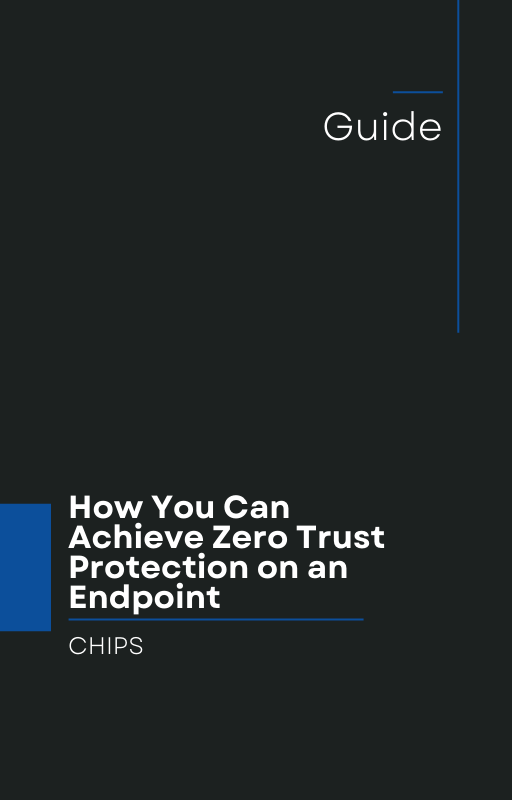In late October 2025, LockBit 5.0—also called “ChuongDong”—reemerged in a major way. According to a report by Cyber Security News, the campaign targeted dozens of organizations globally, striking not just Windows environments but also Linux and VMware ESXi setups. Cyber Security News
This resurgence is a wake-up call for business owners and security leaders. Legacy approaches that focus on detecting threats and then responding aren’t sufficient. It’s time to adopt a proactive stance: one of isolation and containment. That means limiting the damage from initial compromise, stopping lateral movement and preventing full-blown ransomware events.
Here’s what you need to know about LockBit 5.0—and why the endpoint protection solution AppGuard is exactly the kind of tool you need right now.
What we’re seeing with LockBit 5.0
-
Even after law enforcement efforts to disrupt the operation, the group quickly rebuilt a viable affiliate model—charging roughly $500 in Bitcoin for access to its control panel and encryption tools.
-
The variant is engineered for multi-platform assault: about 80 % of infections hit Windows systems, while the remaining 20 % hit Linux and ESXi environments.
-
It boasts improved technical pipelines: optimized encryption routines that reduce the time defenders have to act, randomized 16-character file extensions to avoid signature detection, and advanced anti-analysis features that frustrate forensic work.
-
The ransom note includes a personalized negotiation link and a 30-day deadline before stolen data is published—raising the stakes for impacted organisations.
In short: the threat landscape has evolved. Cyber-criminals like LockBit are executing faster, across more platforms, with greater sophistication.
Why the “Detect and Respond” model is falling short
Historically organisations have relied on tools that centre on detecting anomalies, triggering alerts, then responding through forensic analysis, containment, recovery. But with threats like LockBit 5.0, the window between initial access and full encryption is shrinking. By the time detection fires, a lot of damage is already done.
Furthermore:
-
Signature-based detection struggles when malware uses randomized extensions and anti-analysis features.
-
Even if you detect the intrusion, lateral movement may already have happened across virtualised platforms or hypervisors (see the ESXi attacks).
-
Recovery and remediation are expensive, disruptive and damaging to the organisation’s reputation and operations.
The logical shift: move from chasing threats after they’re inside to stopping them at the point of execution and containment.
Isolation and containment: a smarter paradigm
This is where AppGuard comes in. Rather than placing your faith in detection alone, you embed a mechanism that isolates critical assets, blocks unauthorized execution, and contains malicious behaviour — before damage spreads.
Benefits include:
-
Preventing unknown malware (including zero-day threats) from executing by limiting what applications/processes can do.
-
Blocking lateral movement and escalation—especially important in mixed environments (Windows, Linux, ESXi).
-
Minimising the recovery burden because fewer systems are compromised in the first place.
AppGuard brings a proven 10-year track record of stopping sophisticated attacks — now available commercially for organisations serious about prevention.
Why business owners should act now
-
The threat from LockBit 5.0 is current, global and across platforms. If your business uses Windows, Linux or virtualised ESXi infrastructure you are in the target set.
-
Waiting for detection to trigger means you may already be compromised. The cost of downtime, data loss, reputational damage is massive.
-
Traditional protection strategies are no longer sufficient. The attackers have raised their game — it’s time your defence did too.
-
With AppGuard’s isolation-and-containment approach you shift from being reactive to proactive, turning the attacker’s speed and sophistication into your advantage.
Final thoughts
The emergence of LockBit 5.0 is a clear signal: attackers are evolving, environments are becoming more complex and the window to act is narrower than ever. Organisations that continue to rely solely on Detect and Respond are placing themselves at severe risk.
If you are a business owner, CISO or security leader, this is the moment to rethink your endpoint strategy. Embrace isolation and containment today — before your organisation becomes the next headline.
Call to Action
At CHIPS we specialise in helping organisations like yours adopt AppGuard — the endpoint protection solution built for this new era of threat. Talk with our team about how we can deploy AppGuard in your environment, shift your defence strategy from Detect and Respond to Isolation and Containment, and protect what matters most. Contact us today to schedule a consultation.
Like this article? Please share it with others!

November 6, 2025

Comments